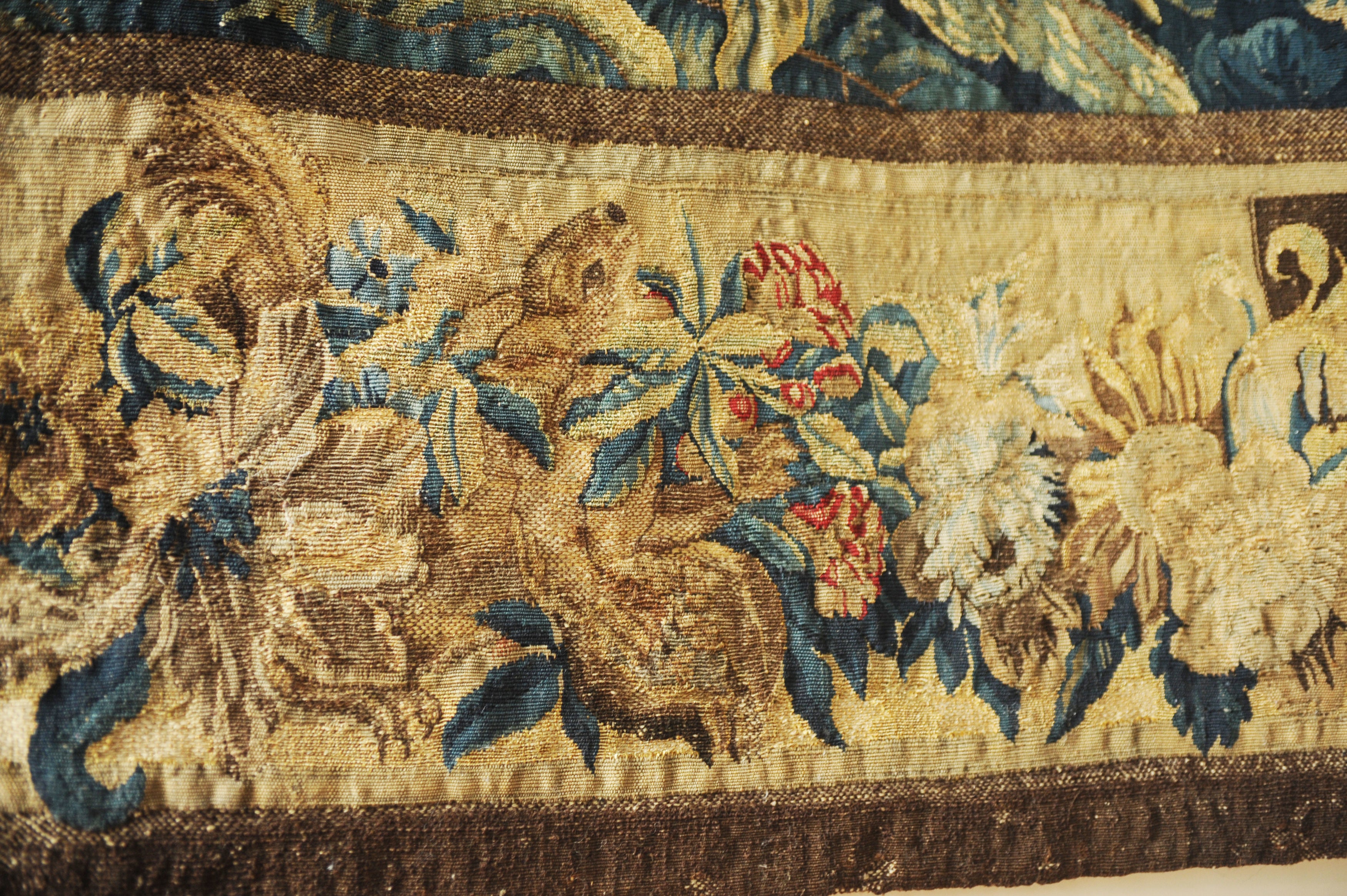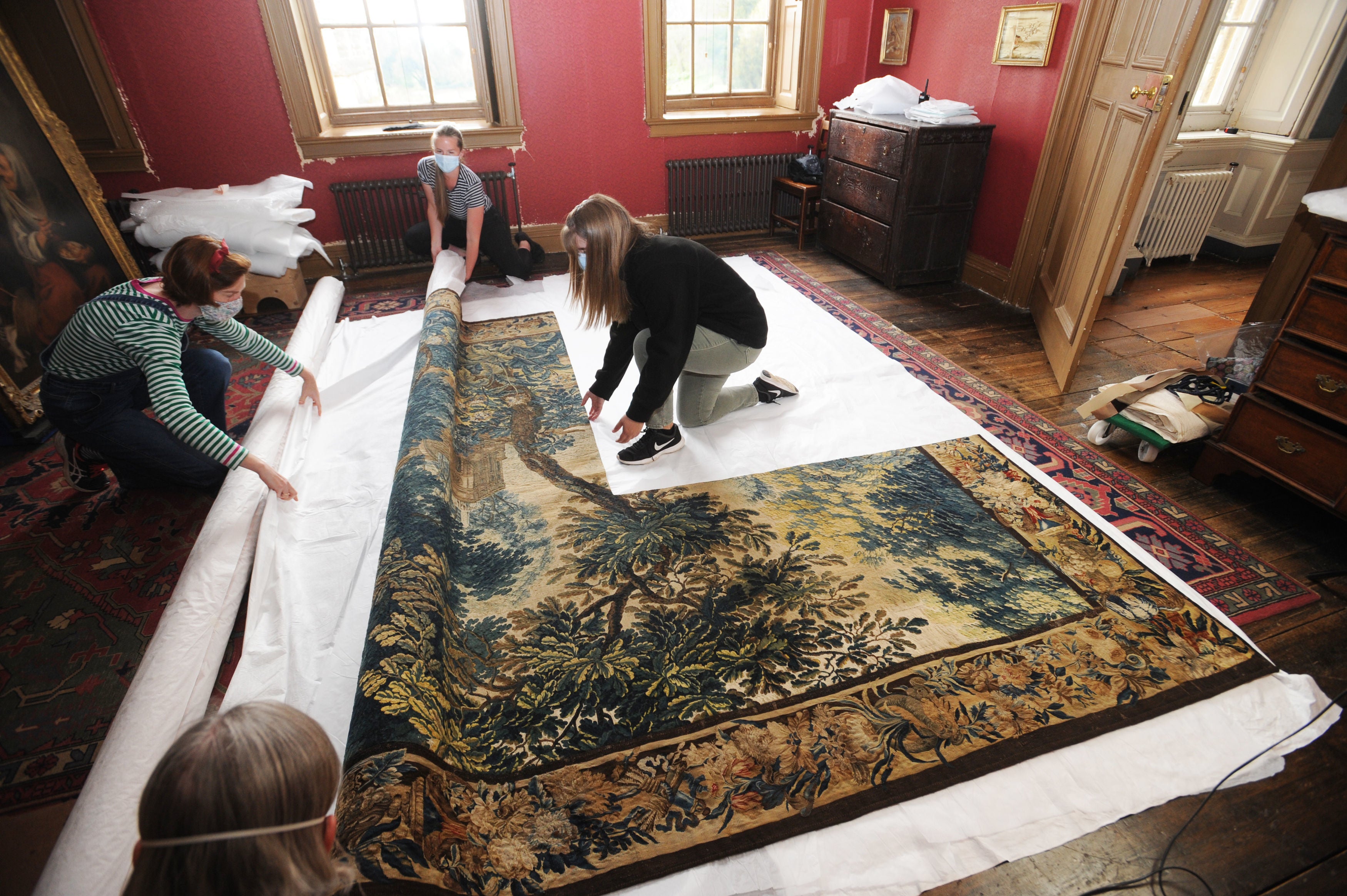‘Secret squirrel’ restored to rare tapestry amid major restoration works
The tapestry underwent £140,000 of restoration works after sustaining years of damage

Your support helps us to tell the story
This election is still a dead heat, according to most polls. In a fight with such wafer-thin margins, we need reporters on the ground talking to the people Trump and Harris are courting. Your support allows us to keep sending journalists to the story.
The Independent is trusted by 27 million Americans from across the entire political spectrum every month. Unlike many other quality news outlets, we choose not to lock you out of our reporting and analysis with paywalls. But quality journalism must still be paid for.
Help us keep bring these critical stories to light. Your support makes all the difference.
A “secret squirrel” that had worn off a rare 17th century Flemish tapestry has been restored to its rightful place among the foliage as part of major repair works on a pair of tapestries on display at the National Trust’s Dyrham Park estate near Bath.
The red squirrel was originally woven with wool and silk on the large Enghien tapestry, but disappeared after it sustained years of damage.
Both tapestries underwent £140,000 specialist cleaning and repair works before being returned to the estate ahead of its reopening in mid-May.
Eilidh Auckland, property curator at Dyrham Park, said: “It’s just brilliant to have these amazing tapestries back and looking fantastic.”
“There had been some splitting and loss of detail due to the application of adhesives on old repairs and patches replacing parts so it’s wonderful to see them back to their former glory and with the added bonus of a new squirrel.
“The tapestries appear more cohesive while also being protected for the future.”
The squirrel’s absence was spotted by textile conservators undertaking the work in Norfolk who noticed a gap in the wool weft of the lower border.

They compared it to other tapestries in the set and discerned that a squirrel had once hidden there among the leaves.
The tapestries were found to be “soiled, heavily stained and light damaged” when they arrived in Norfolk, with “large areas of loss”.
Brittle adhesives were removed from them using a process involving solvent application and a specialist vacuum suction.
The tapestries were then taken to Belgium for wet cleaning, before being returning to Norfolk for intense conservation stitching work.
The complete tapestries depict the fountains and parterres of the gardens at Enghien near Brussels. They are one of only two sets of their type in the UK.
They now hang, restored, on the walls of the Tapestry Bedchamber on the first floor of Dyrham house.
Subscribe to Independent Premium to bookmark this article
Want to bookmark your favourite articles and stories to read or reference later? Start your Independent Premium subscription today.
Join our commenting forum
Join thought-provoking conversations, follow other Independent readers and see their replies
Comments